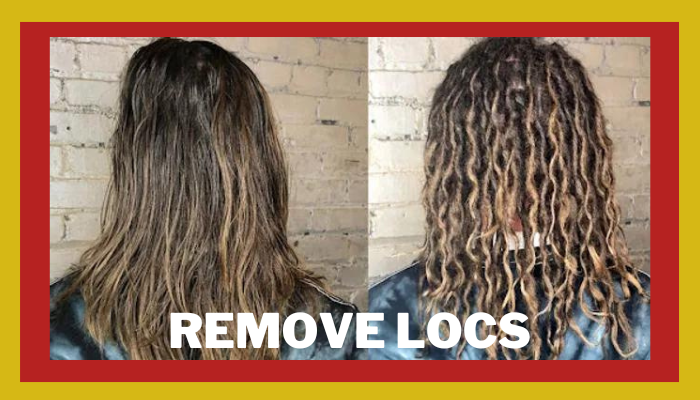If you have dreadlocks, you have probably accepted that it’s for a lifetime and permanent. Therefore, if you want to get rid of those locks, you can either cut them or grow them out. It is possible, however, to actually comb your dreadlocks depending on the condition of your hair and your skill at doing so.
In this guide, I’ll take you through how to remove dreadlocks at home without cutting them.
How to Remove Dreadlocks At Home Without Cutting
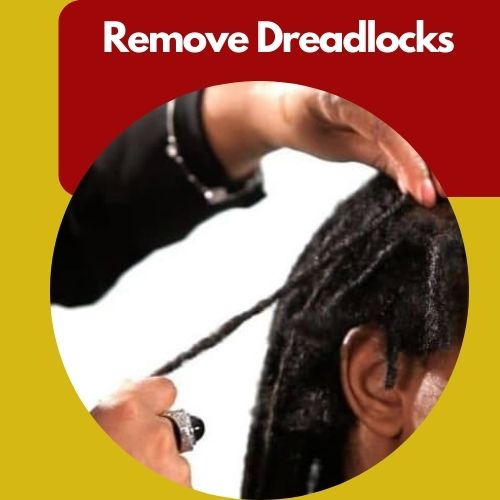
You should understand that these ideas we share are first-hand experiences from people who have been successful in removing their dreadlocks without cutting. While it worked for them, you should also understand that your hair will go through various stages during the removal process, which requires patience and responsibility.
With that said, it’s best to allow a dreadlock professional or stylist to take care of the unlocking process.
Ready?
1. Get Your Supplies
Removing dreads is hard work, so make sure you prepare yourself by grabbing everything you could possibly need.
2. Cut
According to Staci Linklater, Salon Director of Globe Salon, it’s best to cut a few inches of your dreads from the bottom. Since you’ll comb them out and needs a loose end to start with, it’s best to cut to save yourself time. The bottom of most dreads is damaged anyway. This is required no matter how well you frequently condition and care for your dreads.
3. Saturate with oil
You should soil a satisfactory amount of hair oil in your dreadlocks about an inch above the ends until they are well-saturated. Allow the dreads to drink as much oil as it needs to be worked with. You’ll use about two to three bottles of Kerastase Elixir or other oils you might prefer during the process. Oiling the hair is essential since not only does it improves in unlocking but also keeps the hair supple. You could end up with hair breaking off in many places if you skip oiling your dreads.
You can also choose to cover your hair in conditioner as much as possible to make it easier to detangle. The best products to try are Paul Mitchell The Detangler and Design Essentials Natural Almond & Avocado Moisturizing & Detangling Conditioner.
4. Wet
Also, make sure to keep your dreads wet throughout the process. You can achieve this by keeping a spray bottle filled with warm water beside you. Warm water will help loosen the hair a little more than cool or cold water would. This also aids in untangling.
As close to the scalp as possible, gently separate dreadlocks or matted sections where they are joined at the roots.
5. Comb
Now, this is the stage to put on your coat of patience and have a comfortable seat. Your goal is to gently pick and poke directly into the end of the freshly cut lock with a highlighting comb, freeing the hair from the knots it has accumulated. A highlighting comb is also known as a rat-tail comb.
At the end of the handle, there is a long point, similar to the point of a thin knitting needle. Pull apart the cut lock with this point by poking into the centre and breaking through the tangled hair. Start from the back and work your way forward in one-inch sections. Whenever you have one inch of hair unlocked, gently comb out that portion, add some oil, and then move up. Continue doing this until the lock is thoroughly untangled.
To disguise the back during the takedown process, you can put your hair in a ponytail or braid to camouflage it while you comb out other dreads.
Spray your hair with warm water if it starts to dry out.
Don’t be alarmed if you are losing more hair than you expected.
It is estimated that the average adult sheds around 100 hairs per day, and these shedding hairs get stuck in their dreads. Although there are clumps of hair falling out, the majority of them are old, previously shed strands.
6. Secure Your Loose Hair
While working on the other dreads, your well-combed hair will most likely tangle. To avoid this, oil the combed area before braiding or twisting it and tying it off with a rubber band. This kept your unbound hair in place while your stylist worked on the rest of your hair.
7. Wash and Condition
Once all of the dreadlocks have been unlocked, it’s time to eliminate all that product buildup, oil, and dead hair. Thoroughly shampoo and condition your hair. This stage is relaxing and gives a soothing feeling to your scalp. You can use Bain Magistral shampoo and Fondant Magistral conditioner, along with a Ciment Instant Treatment boosted with Nutrition.
8. Trim your hair
Once the cleansing and conditioning were done, dry and flat iron the hair. Then trim the bottom to achieve an equal length. The amount of hair you trim from the bottom depends on how long or short you want to wear it.
Why Do People Comb Out Their Dreadlocks?
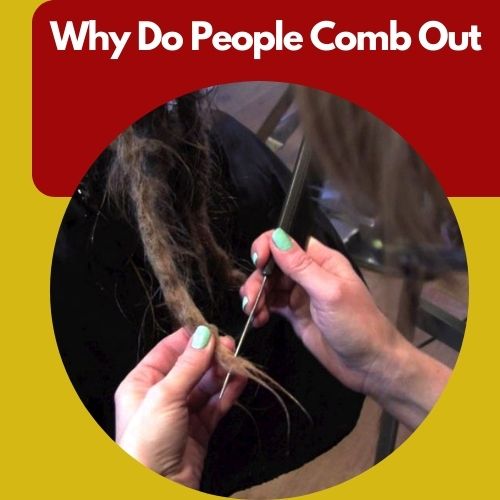
There are several reasons why someone would wish to remove their dreads. While we can’t absorb all the below reasons, these are some of the most common reasons people comb out their locs.
1. They have a change in lifestyle or career
Indeed, some employers have prejudices against employees who maintain hairstyles like dreadlocks. They aren’t always deemed professional, so some people may get rid of their dreads to further their careers.
Some folks need to appear presentable for a new job, so they cut their dreadlocks. While some people make substantial changes in their lives, such as leaving or starting a relationship, moving to a new place, or any other major transition, they may desire to change their haircut as well.
2. They’re ready to try something new
The most apparent reason people comb out their dreads is to make a difference. Dreads are fantastic, but the styling possibilities can be limited. The good news is that they can always re-loc their hair if they want them back!
3. Their hair gets too old and heavy
Long dreadlocks are even heavier than long loose hair. Although shed hair remains in your dreads, it accumulates and weighs your head down over time.
Some individuals are simply fed up with their dreadlocks becoming too long and constantly getting in the way. Others complain of headaches or neck pain as a result of the weight of their dreadlocks. Weight may be an indicator of product or wax buildup over time in some circumstances.
How Long Does It Take to Get Rid of Dreadlocks?
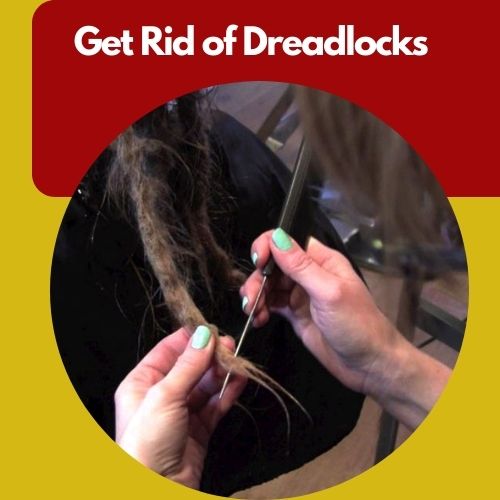
The length, thickness, and maturity of your dreads determine how long it takes to disentangle them. People with thick and long hair just have more hair to work with.
Dread maturity also has a significant impact on how tough it is to get rid of your dreads. The younger your dreads, the easier they will be to get rid of. Similarly, older dreads will require more time and effort to comb out.
On average, each dread will take between 1 and 2 hours to untangle completely. It will most likely take a few days of working on and off until you finish, so plan accordingly.
While working, we propose binge-watching a new series or having a movie marathon.
Besides allowing the time to fly by, watching something you enjoy gives you the opportunity to relax as well. This will prevent you from tearing through your dreads out of frustration.
Dos and Don’ts of Removing Dreadlocks
Ready to start combing out your dreadlocks? Before you do, take some time to review this list of dos and don’ts. Keep them in mind to make sure the process goes smoothly.
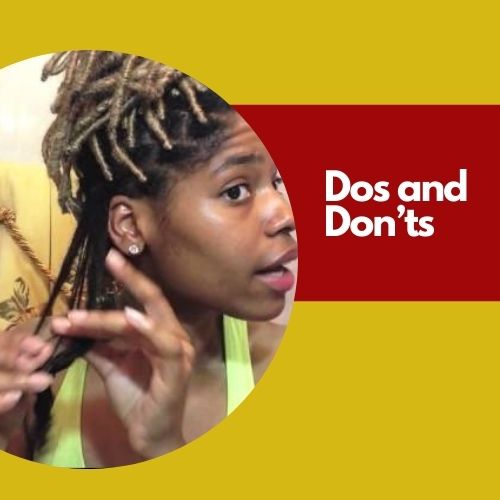
Do’s
- Do use your most slippery conditioner.
- Do grow your locs out before you remove them if you’re concerned about length.
- Do block out at least a day for the dreadlock removal process. Taking down dreads takes a very long time.
- Do enlist the help of your friends, family, and professionals to help the process go much faster.
- Do keep a spray bottle filled with water handy so you can make sure your hair stays damp and has plenty of slip.
- Do start removing dreads from the back of your head so you can keep your loose hair hidden.
Don’ts
- Don’t rush through the combing-out process.
- Don’t comb out your dreadlocks without saturating them with conditioner or a slip-enhancing product.
- Don’t be alarmed at the amount of hair that comes out.
- Don’t detangle your dreads while they’re completely dry.
- Don’t assume that you’ll be able to retain all of your lengths.
What to expect when Removing Dreadlocks based on Age
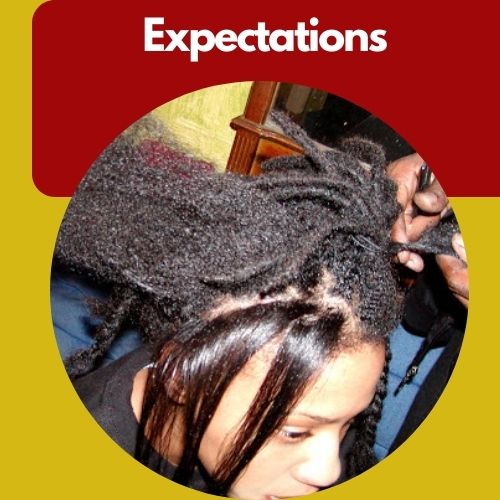
1. Young Dreads – Under 6 Months
Young dreadlocks are the simplest to remove. Young dreadlocks have healthier hair to work with and less time for knots to tighten and mature. Combing out young dreadlocks is the best-case scenario! You could expect to have more healthy hair after combing out dreads within the first 6 months.
2. Intermediate Dreads – 6-18 Months
You will find it more and more difficult to comb out your locs as they tighten and form more tightly packed knots. Dreadlocks can still be loosened at this age, though it requires more time and effort. When removing dreadlocks at this age, you will lose more hair than when removing dreadlocks at a younger age.
3. Mature Dreads – Over 18 Months
The more your dreadlocks mature and age, the more difficult it is to comb them out. Mature dreadlock removal is still possible, but it will take the most effort and patience of any age bracket on this list. You should also expect more hair to fall out at this age.
Frequently Asked Questions (FAQs)
Will it be painful when combing out dreads?
Most of the process won’t be painful at all, but the closer you get to your scalp you get the more painful it will be. Anyone who has had knots combed out of their natural hair will understand the feeling you’ll experience. A significant benefit of doing this process on your own is that you can go at your own pace and stop when things get too painful for you.
How much hair will I lose when removing dreads?
The amount of hair you’ll lose in the removal process will vary greatly. It’s undeniable that you will lose hair, and it will look like a lot of hair! Despite how much hair comes out, you should be left with plenty of healthy hair in the end. Ultimately, the amount of hair you’ll comb out mostly depends on a wide range of factors listed in the sections below.
What is the easiest way to remove dreadlocks?
To comb out dreads, you’ll need to wet the hair and smother it with a lubricating conditioner to get started. Then you’ll use a pick or metal comb to very patiently start picking out the hair from the tip of the dreadlock working toward the scalp.
How do you unlock dreads naturally?
Mix a bottle of water and conditioner. Fill a spray bottle up one-quarter of the way with a very slippery conditioner, and the rest of the way with hot water. Screw on the spray head and shake the bottle thoroughly to mix it. Use the bottle to re-wet your dreadlocks as they dry out during the untangling process.
Is it possible to unlock dreadlocks?
Contrary to some opinions, locks or dreadlocks can be safely removed. You will probably experience some hair loss and will see the shedding of the hair that is no longer attached to the hair but is still in the lock. You may have to cut off some amount. But, with patience and the proper tools, you can remove your locks.
Are dreadlocks permanent?
No, dreadlocks are not permanent. They can be undone by cutting or unravelling them whenever needed. How long does it take for dreadlocks to lock? Typically, it takes around 10 months to two years for dreadlocks to lock.
Now it’s your turn
This process seems simple, yet it requires extraordinary patience. Unlocking your dreadlocks can seem impossible at the thought of it, but with the right professional and even following through the best guidelines such as ours, you can be able to DIY.
Unlocking your dreadlocks should be a personal intentional decision. You’ll know when it’s time. So, are you ready?
